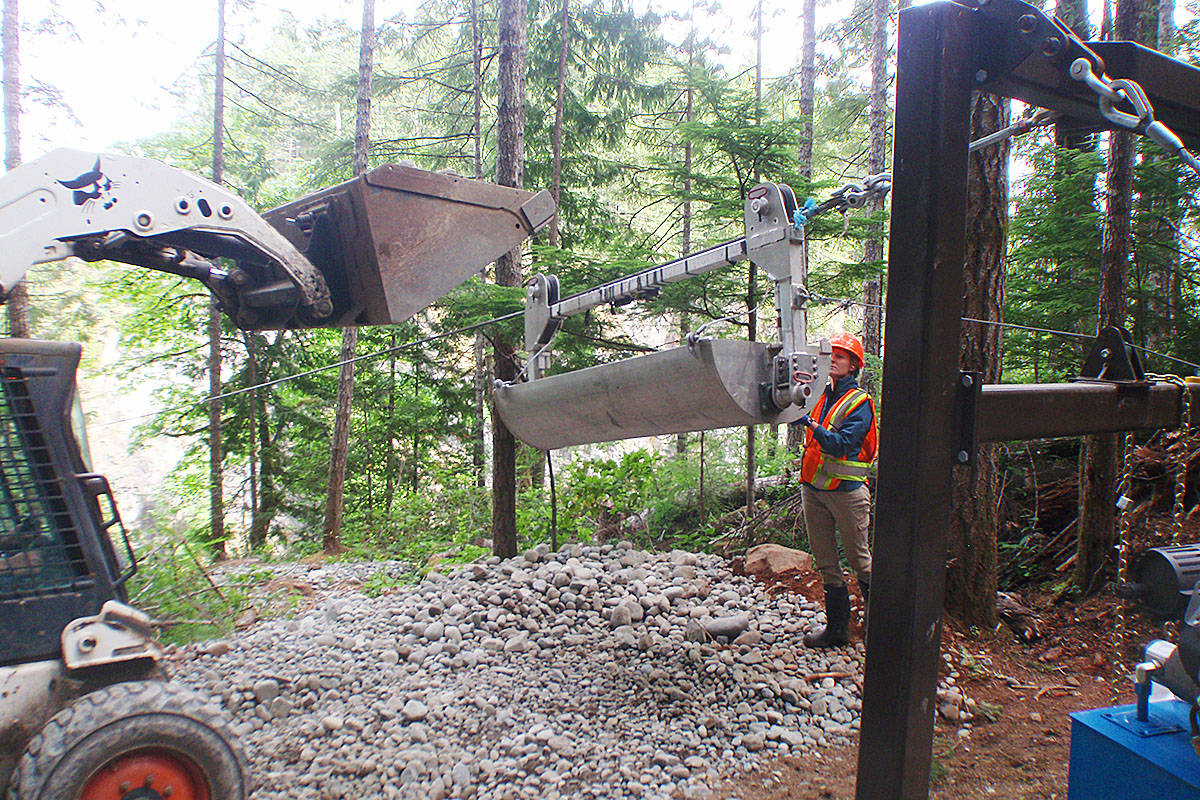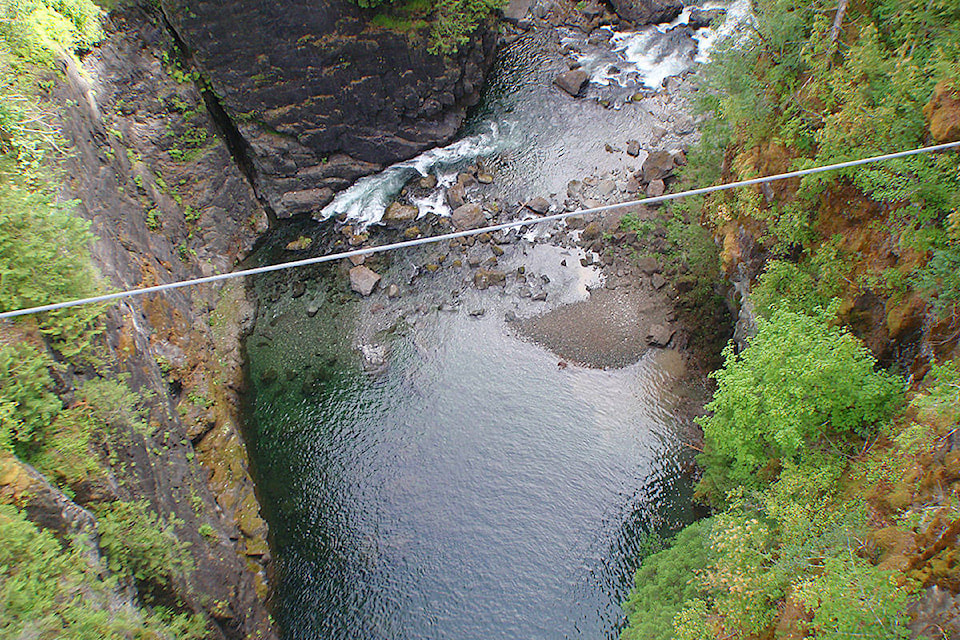More intense rain storms in recent years are wreaking havoc on crucial gravel salmon spawning beds in the Campbell River due to the need for BC Hydro to release large amounts of water from its hydroelectric facilities on the river system.
And a recent meeting of agencies and stakeholders identified the need for a long-term strategy to replace that spawning-bed gravel.
BC Hydro facilitated a regular meeting with agencies and stakeholders Feb. 28 to go over hydroelectric operations and capital projects but one of the discussions at the meeting was about the gravel strategy for fish habitat within the Campbell River below the John Hart dam and the generating station.
“The placement and use of gravel in the river is of high importance to members of the community as it helps in the long-term productivity of salmon, particularly Chinook,” says BC Hydro’s Stephen Watson. “Unfortunately, particularly since 2014, we have seen large storm events hit the watershed and water releases downstream from flood risk management operations has moved gravel in the river. The concern is that established gravels and newly placed gravel pads are being picked up and moved downstream with the high water flows. So the discussion is what we do about it – what is the plan.”
Related: BC Hydro prepares for worsening weather forecast by increasing flow from Campbell River dam
The Fish and Wildlife Compensation Program (FWCP) was established in 1999 to conserve and enhance fish and wildlife in watersheds impacted by BC Hydro dams. In this case, the impact has been on natural downstream gravel replenishment that’s been stopped because of the dams. Gravel augmentation and placement to restore salmon habitat is identified as a priority in FWCP’s Campbell River Watershed Action Plan. The majority of the gravel projects over the years have been largely community-based with full or partial funding coming from FWCP and other funding entities. FWCP has funded $1.14 million towards 23 gravel projects.
This year, FWCP will provide $27,430 in funding to Fisheries and Oceans Canada to restore gravels that moved during the record-setting December 2016 storms.
“This project will re-shape gravels at the upstream end of Second Island by having the riverbed go back to being fully covered with water at a flow rate of 80 m3/s (cubic metres per second),” said Watson. “Right now, some habitat by Second Island gets isolated when flows go below about 95 m3/s. That means the gravel will be more functional for fish and reduces the risk of fish stranding. The re-contouring of the gravel is expected to also provide for good Chinook spawning habitat this fall.”
The BC Conservation Foundation received $51,000 for gravel placement just below Elk Falls.
This is the near-term plan but what about the future for gravel placement and monitoring?
“Funding gravel placement projects and development of a monitoring plan is something that’s of high priority within our Watershed Action Plan for the Campbell River,” says FWCP Coastal Manager, Julie Fournier. “FWCP supports projects that address the priorities identified in our action plans. We are now following up on the Campbell River strategy session we had in 2017 with First Nations, government fish agencies and key stakeholders to determine, particularly on monitoring, who might be interested. Those discussions will happen over the next six months and lead up to the next grant application intake this fall. ”
“Providing appropriate habitat for successful salmon spawning is very important to DFO,” says DFO Fisheries Protection Biologist, Dan Sneep. “We look forward to determining how best to manage the Campbell River system for gravel, while at the same time understanding that we are seeing more intense fall and winter storms hitting the watershed. Participating in BC Hydro’s community liaison committee allows me to see firsthand what they are dealing with. We are all seeking a clear strategy for gravel placement and monitoring, and we hope to have a better understanding on that later this year.”
FWCP is a partnership between BC Hydro, the Province of B.C., Fisheries and Oceans Canada, First Nations and public stakeholders to conserve and enhance fish and wildlife impacted by existing BC Hydro dams. Since 1999, $5.5 million in FWCP funding has been provided to fish and wildlife projects within the Campbell River area. Learn more at fwcp.ca.

